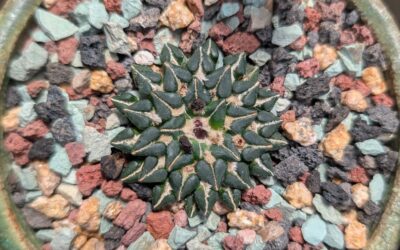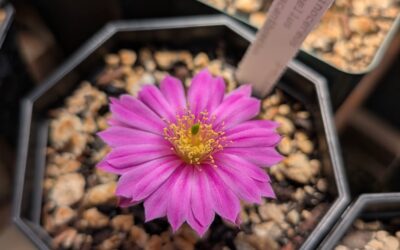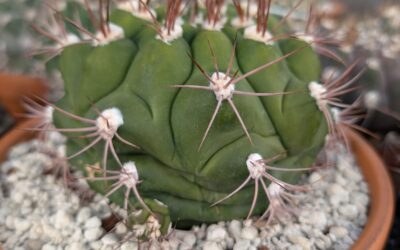Species Description and Distribution
Gymnocalycium vatteri is a South American species hailing mostly from Argentina. The distinguishing feature for this cactus compared to others in the genus is the spination – they’re stiff, bent close to the body of the cactus, and typically only one to three are present. To my eye, they form a T-shape.
According to Llifle, they are also known as Gymnocalycium ochoterenae ssp. vatteri, but I have not seen anyone online or at clubs use that name.
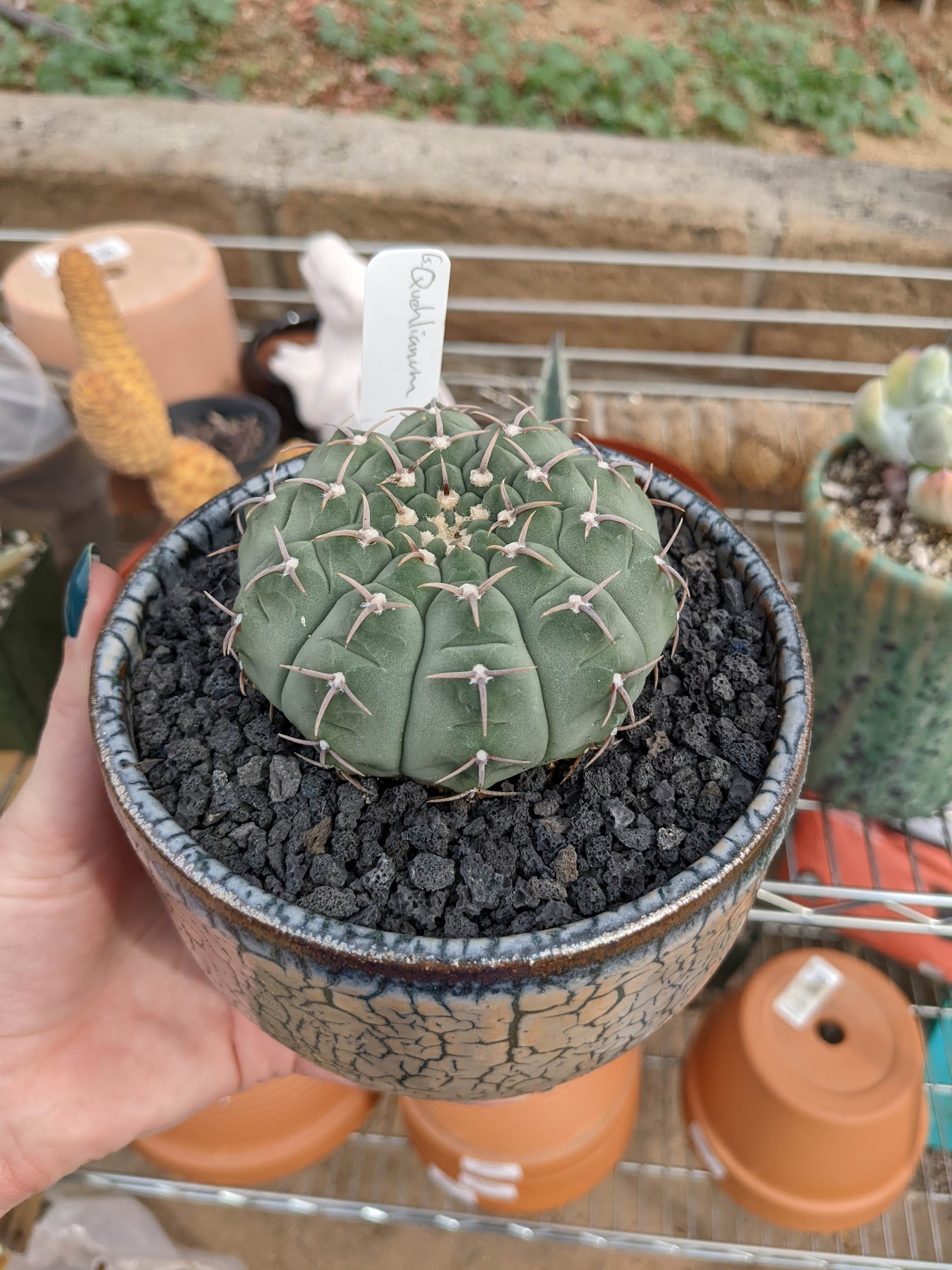
G. vatteri in Cultivation
This is a slow growing, but ultimately easy to care for species that is still somewhat uncommon in collections.
Soil and Potting
As with most Gymnocalycium, these thrive with a well-draining soil. I prefer to mix about 25 – 50% pumice into my typical succulent soil for a nice, consistent mix that drains quite well.
These cacti stay fairly small and compact when grown well, rarely getting more than 3.5″ tall and about 4″ wide, although they can get larger when pampered in cultivation.
Because they are a smaller species, care needs to be taken not to overpot them too much. Mine have shown a tendency to produce robust root systems, and so they shouldn’t necessarily be kept under-potted…but it’ll be rare that you’ll need to go much larger than a 4″ or 6″ pot for your G. vatteri.
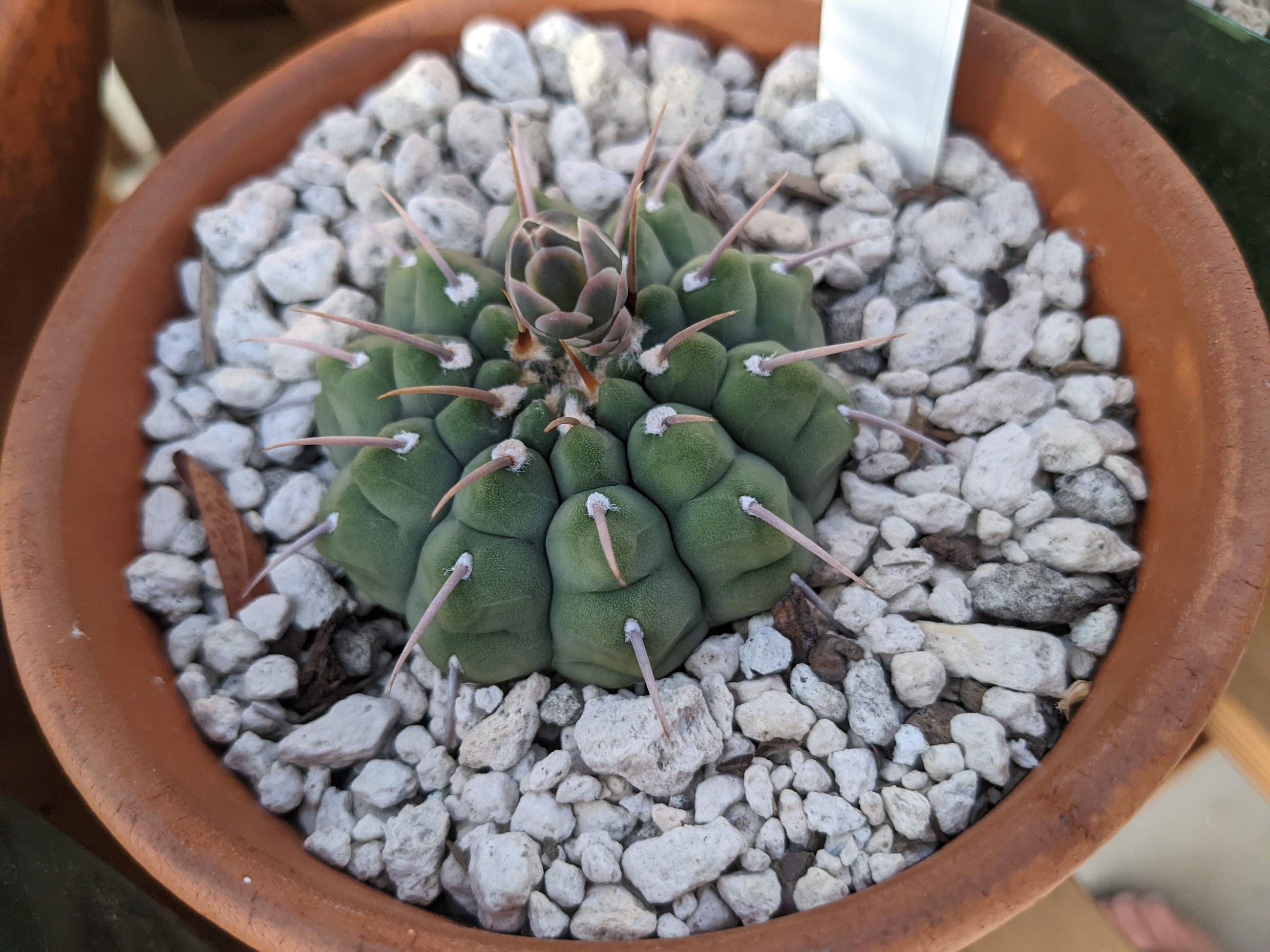
Watering
Very easy to maintain in summer; if it’s hot and bright, water them whenever they’re dry. With mine in my greenhouse, at the peak of summer I’ll water nearly every day (temperatures are often 100+ day after day during peak summer months).
You can tell they’re thirsty when they start to shrink a bit, either sinking a bit into their soil or looking somewhat pruny if they’re a larger specimen.
In winter, you’ll need to drastically reduce watering. With dry roots, they are fairly cold hardy, tolerating temperatures down to the mid or high 20s if kept perfectly dry.
Fertilization
In summer, a cactus-specific fertilizer or a dilute balanced fertilizer can be a welcome addition to your routine.
You should only feed your cactus during the growing season, which is mid to late spring through summer. If you’re using a soil mix that is higher in organic medium, you should fertilize less often than if you’re using a highly inorganic blend. In a blend high in pumice, you should expect to fertilize (typically at 1/2 strength or less) nearly every time you water during peak summer months. In soil that is more than 50% organic material, you should only fertilize every month or so.
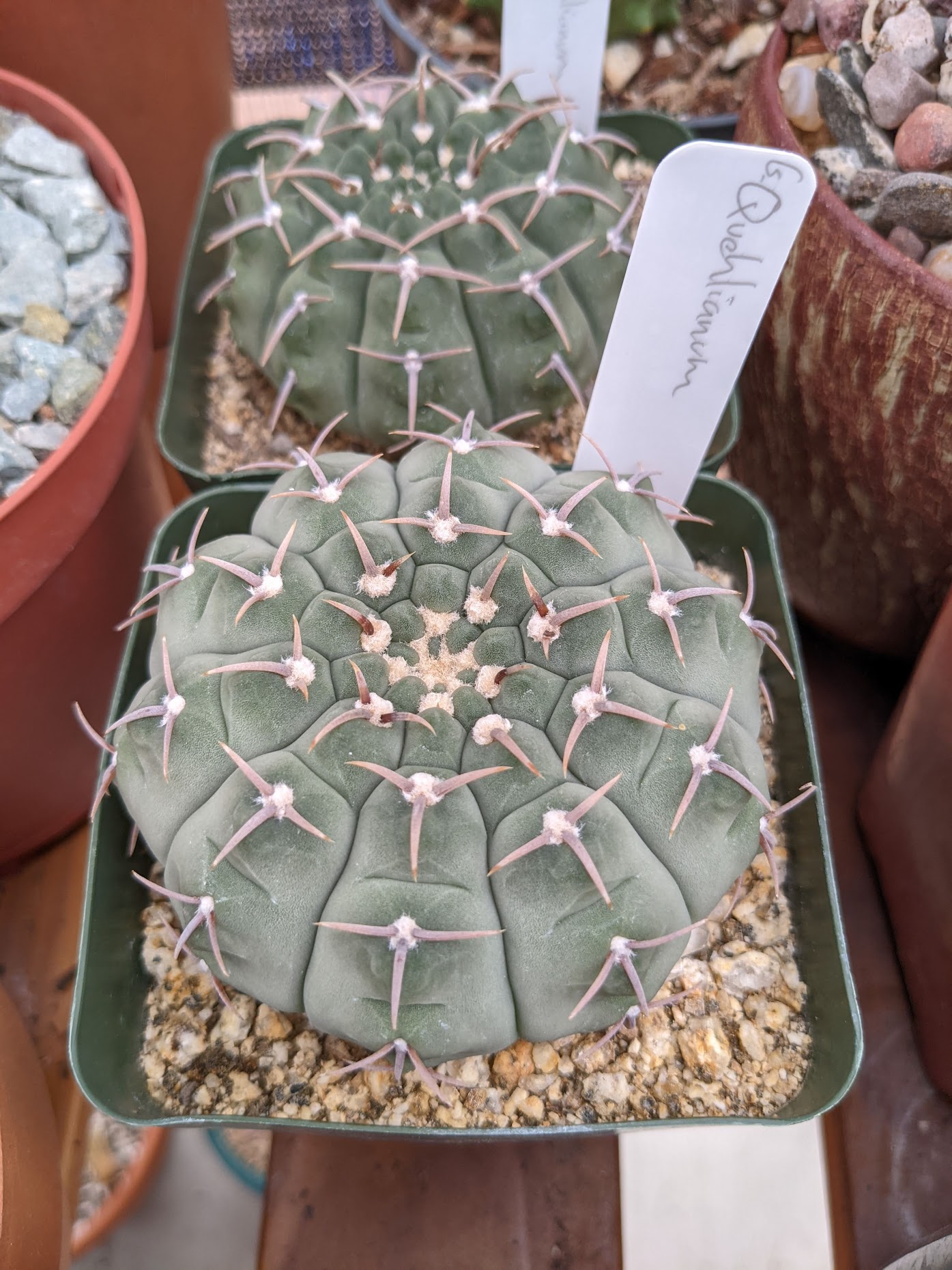
The label here is wrong; the species G. quehlianum listed on the label gets larger and typically has 5 or more spines per areole, where G. vatteri has three or fewer.
Sun Exposure
These thrive with extremely bright light, with nearly full sun being acceptable as long as they get some shade for the hottest/most intensely sunny time of day.
I’ve been very cautious with mine, as I love the pristine look they have and want to protect them from sunburn. This means once getting them, I kept them in nearly full shade for a few days before slowly moving them to exposures with more light. Typically, I’d move them every few days to a spot that got an extra hour or two of sun.
Because these are a smaller species, they don’t need 100% full sun, but they are still a cactus and need extremely bright light. You could try growing them in a windowsill, but expect to use supplemental lighting if you get cloudy days or in winter.
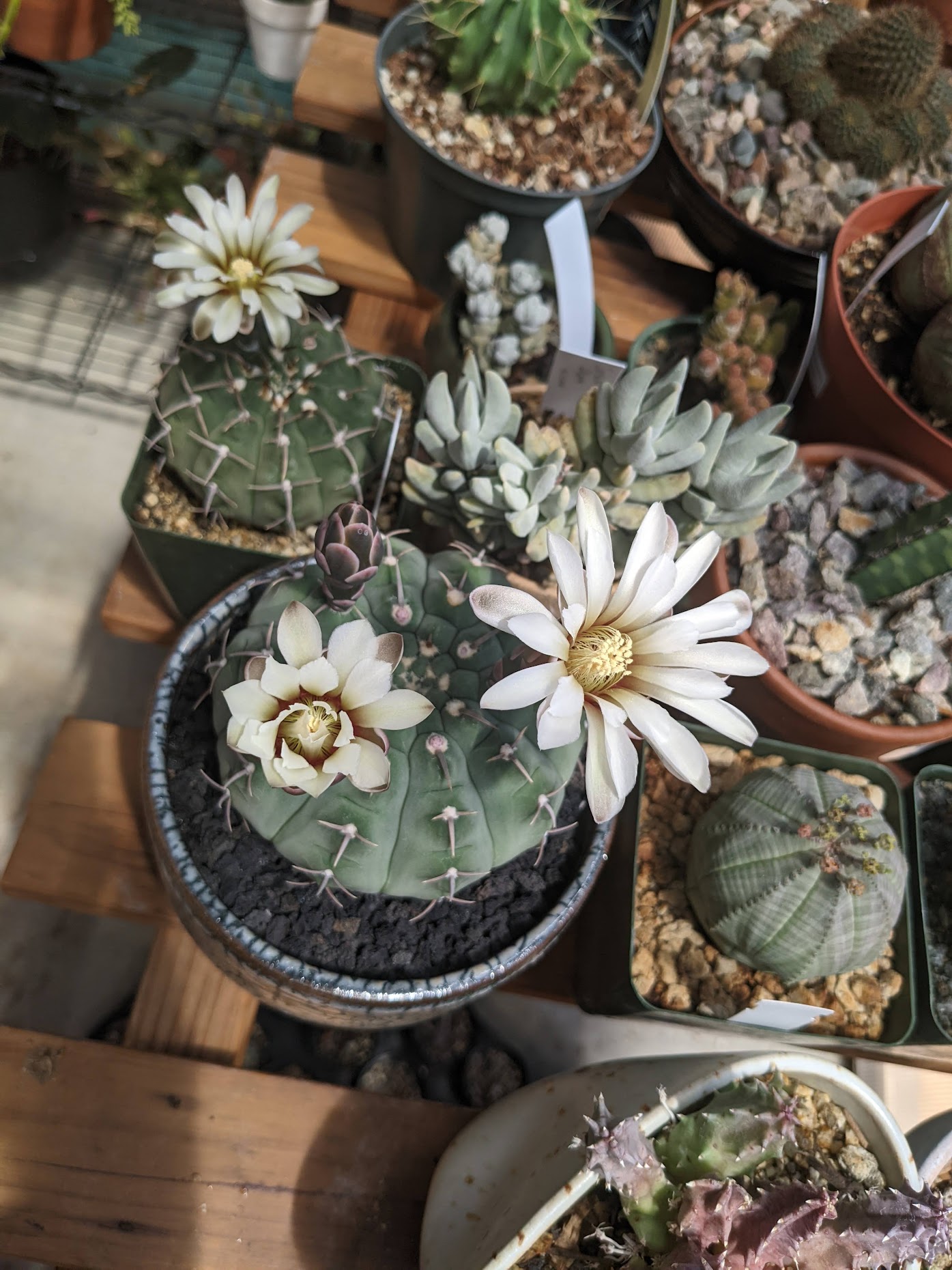
Highlights of Growth
Gymnocalycium vatteri produces relatively large, showy white flowers with a reddish to brownish colored throat. They’ll bloom profusely all through late spring and summer, and mine have been producing blooms consistently since late March of 2022. They’re also in my greenhouse, so conditions are warmer than growing them outdoors!
The species is highly attractive with the chiseled body and mild spination, particularly with the spines pointed somewhat inward rather than out.
If you’d like to grow one in a more compact growth habit (“hard grown”), you’d benefit by mixing a higher amount of pumice or inorganic material into your soil blend and watering less often. You can gauge when your hard-grown vatteri needs water by looking for a sunken-in appearance.
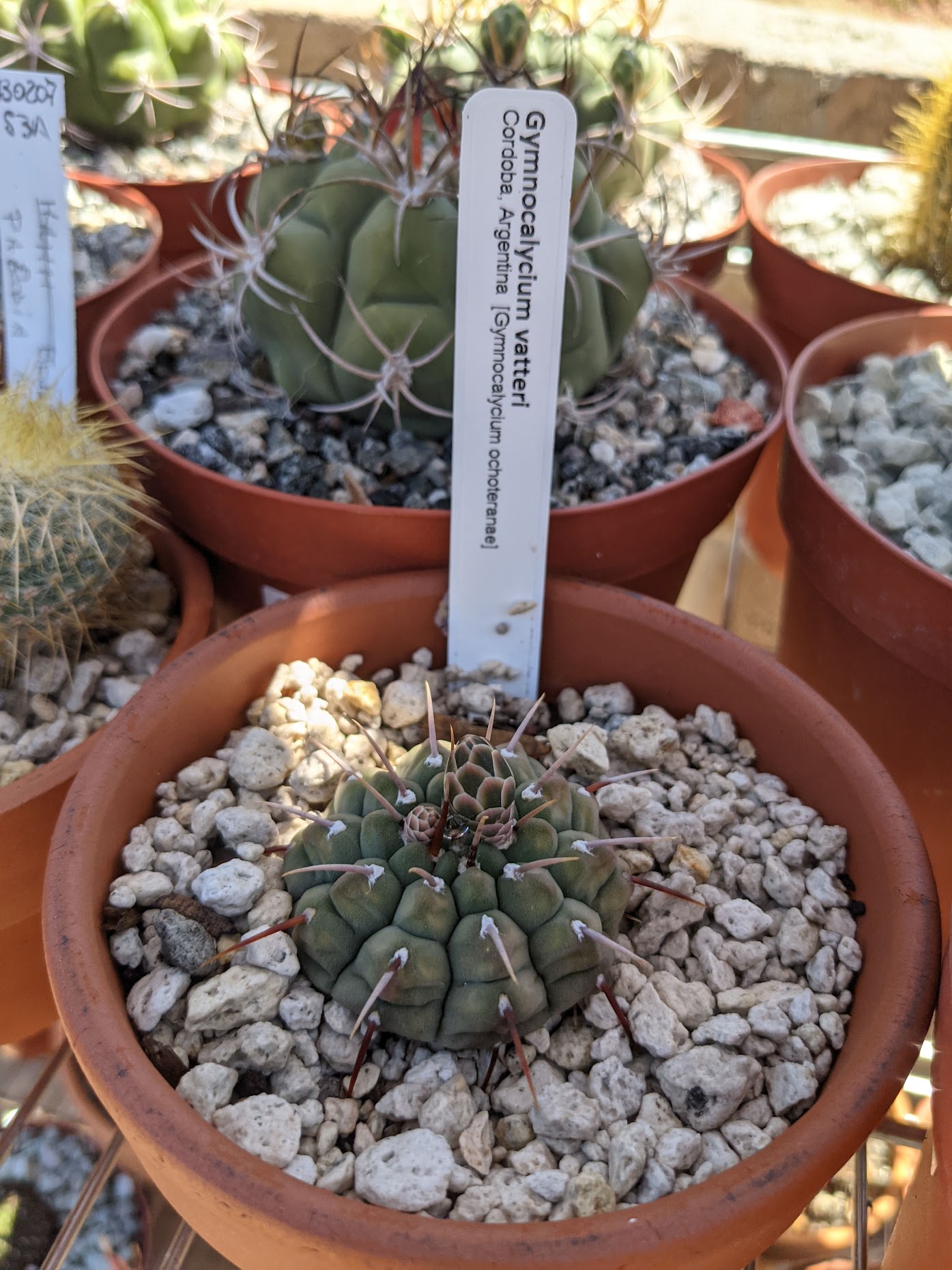
If you compare the vatteri at left against the photo at the beginning of this post (2nd photo), you’ll get an idea of what a thirsty cactus looks like. The one at left is definitely thirsty, although not so much so that it wasn’t going to keep producing blooms.
This is the same cactus as the one pictured above, but the eariler photo is after a few months of growth and more water later in the summer.
Your cactus looking thirsty or stressed as it comes out of winter dormancy is absolutely normal and actually, a good sign of your winter dormancy care. You may need to water in winter to keep the cactus from completely drying out, but after a season of severely decreased water and cold temperatures, it’s hardly surprising that the cactus might look a little rough!

